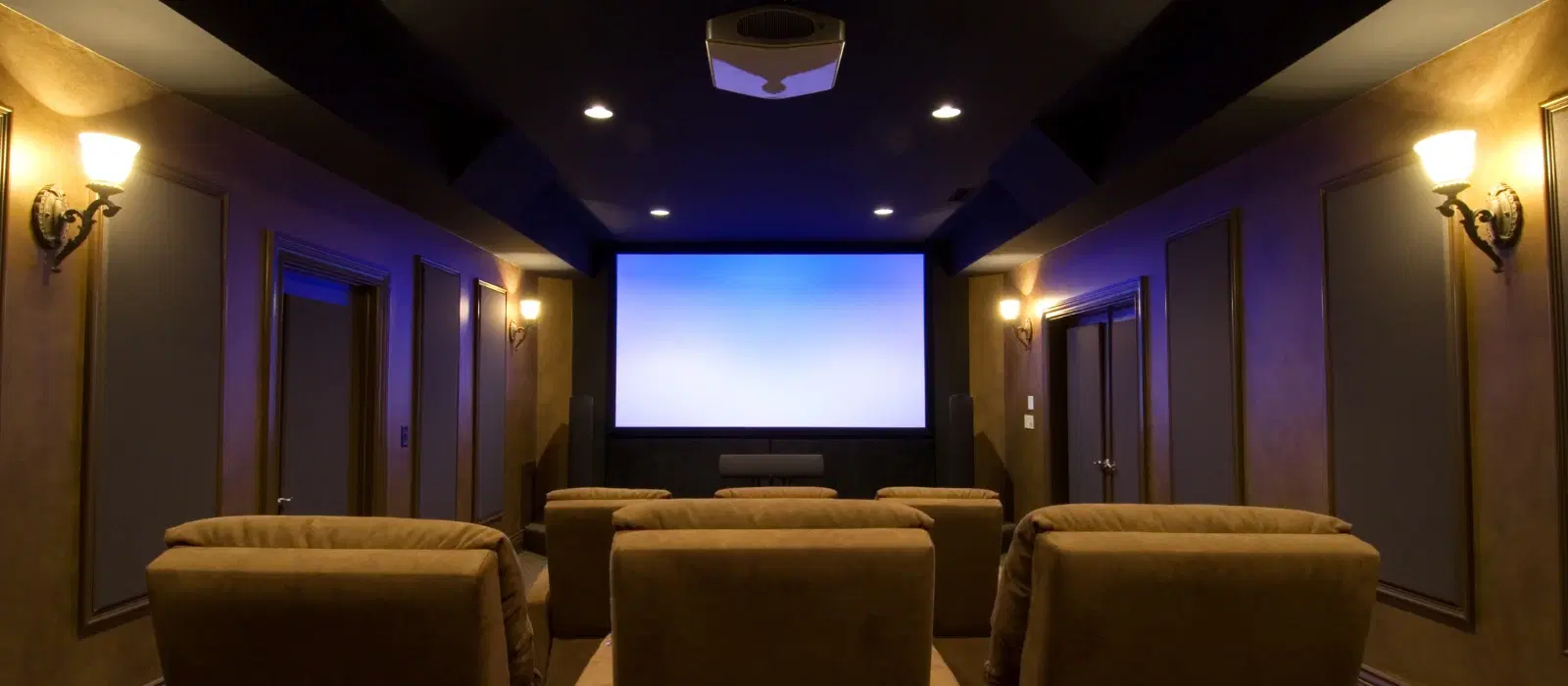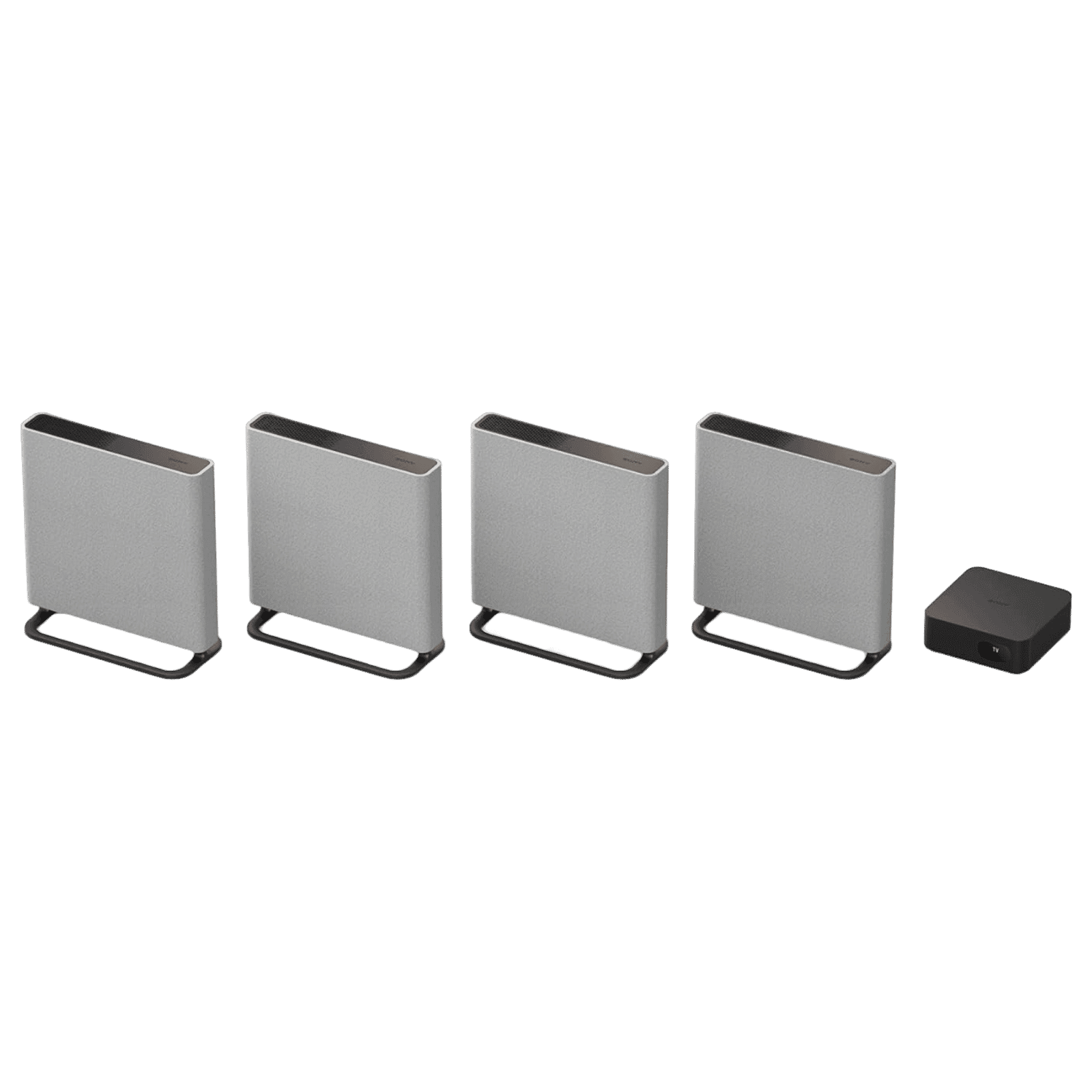
Home Appliances
•07 min read

Buy SAMSUNG Q Series 400W Soundbar with Remote (Dolby Atmos, 5.1.2 Channel, Black) online at best prices from Croma. Check product details, reviews & more. Shop now!
Setting up your home theater audio for Dolby Atmos is key to enjoying a truly immersive home entertainment experience. With the right equipment and guidance, you can transform your living space into a high-fidelity audio haven. In this guide, you will learn how to select and install the essential elements of a home theater audio system and optimise your layout to enjoy the full potential of Dolby Atmos through easy-to-follow steps.
A home theater audio system comprises several components such as the AV receiver, speakers, and a subwoofer. While standard audio setups deliver satisfactory sound quality, a high-fidelity home audio system elevates the experience by producing crisp, clear, and dynamic sounds that make every moment thrilling.
A surround sound system enhances your content by creating an immersive audio environment. Whether watching movies, enjoying music, or playing games, a well-calibrated system intensifies the sensation of being in the centre of the action. This setup not only brings cinematic emotion into your home but also adds a new dimension to everyday audio playback.
Dolby Atmos represents a leap forward in audio technology, offering a sound environment where audio flows around you in a three-dimensional soundfield. Unlike traditional surround sound systems, Dolby Atmos introduces height channels to add depth and clarity, thus providing an engaging home entertainment experience. This integration enables precise placement of sound, making it a go-to option for those looking to upgrade their home theater audio.
Did You Know? Dolby Atmos allows sound to move around you, ensuring each audio cue is delivered at the perfect moment, enhancing the overall cinematic experience.
A robust home audio system starts with the basic components: an AV receiver, a set of speakers, and a subwoofer. Each of these tools plays a vital role in ensuring your system produces high-fidelity audio without compromises. The AV receiver acts as the hub, connecting and powering your speakers, while the speakers and subwoofer take care of delivering crisp audio and deep bass respectively.
An AV receiver is the control centre of your Dolby Atmos setup. It manages audio input, processes multiple channels, and delivers clear signals to your speakers. When choosing an AV receiver, look for features such as ample input options, easy calibration, and compatibility with Dolby Atmos formats. This ensures you have a device that not only meets your technical requirements but also complements your home entertainment setup.
Speakers are the heart of your system, and selecting the right ones ensures every note and sound effect is delivered with precision. The setup might include floor-standing, bookshelf, and in-ceiling speakers, with a growing trend for using wireless speakers for added flexibility. Wireless speakers help reduce clutter, allowing for easier positioning to achieve optimum sound distribution.

Buy SONY HT-A9M2 504W Bluetooth Home Theatre with Remote (Dolby Atmos, 4.0.4 Channel, Grey) online at best prices from Croma. Check product details, reviews & more. Shop now!
For those seeking a simplified setup, a Dolby Atmos-enabled soundbar setup provides an effective alternative to multiple speakers. Such soundbars incorporate innovative technologies to create a surround sound effect while reducing wiring complexities. However, while the convenience is unmatched, they might not always rival the customiseability of separate speakers when striving for the ultimate home audio system.
The subwoofer significantly enhances low-frequency sounds, delivering punchy bass that underpins every cinematic explosion or music beat. Positioning your subwoofer correctly is crucial – placing it near a wall or in a corner can capture more of the low-frequency response without overwhelming the rest of the audio output.
Begin by assessing your room layout and acoustics. Consider factors such as room size, wall materials, and furniture placement as these can affect sound dynamics. Identify the optimal positions for speakers and subwoofer to maximise sound flow and user comfort.
Start by connecting your AV receiver to the speakers and subwoofer. Follow the detailed instructions provided with your equipment. Ensure cables are neatly tucked away for a clean, organised setup, which not only looks good but also minimises interference.
After connecting all components, dive into your receiver’s configuration settings. Program the receiver for Dolby Atmos to ensure each speaker channel is accurately routed. Calibration tools, often built into most modern receivers, help fine-tune speaker levels so that every sound element from whispered dialogue to thunderous bass is crystal clear.
Adjust the speaker levels and position based on your room's acoustics. Employ simple tools like a sound meter to balance out audio levels. Experimenting with positions and settings can reveal the sweet spot where your home theater audio system delivers a truly immersive experience.
Integrating a multi-room audio setup allows you to enjoy your music and movies in more than just one room. This extension ensures seamless sound continuation between spaces, elevating your overall home entertainment experience. Such systems provide a harmonious blend of ambience at home, making them a popular choice among tech enthusiasts.
To achieve high-fidelity audio, always ensure you’re using quality sources. From high-resolution audio files to streaming platforms known for their quality, combining these with your Dolby Atmos setup guarantees optimal performance. The clarity in sound reproduction is a testament to the power of a well-thought-out home audio system.

Buy Croma 0.75 Ton 3 Star Window AC (Copper Condenser, Dust Filter) online at best prices from Croma. Check product details, reviews & more. Shop now!
Take advantage of smart home technology by integrating your audio system with voice control and automation devices. Imagine adjusting settings with a simple voice command or automating scenes that adjust both lighting and sound to your mood. Such seamless integration not only enhances convenience but also complements the futuristic appeal of your home entertainment space.
Wireless connections can sometimes be challenging. Ensure that your wireless speakers and AV receiver are on the same stable network. Minimising interference through proper router placement and firmware updates can resolve many issues related to connectivity.
If you experience discrepancies in audio quality, verify each component's connectivity and functionality. Regular maintenance, including firmware updates and recalibration of your system, is essential to maintaining a premium home theater audio experience.
High-fidelity home audio systems deliver clearer, more precise sound across multiple channels, creating an immersive listening experience compared to standard setups.
Unlike traditional systems, Dolby Atmos introduces height channels for three-dimensional sound, allowing audio to move around you for a more dynamic experience.
An effective Dolby Atmos setup includes an AV receiver, various speaker types, a subwoofer, and optionally a soundbar for simplified installation.
Assess your room’s acoustics, avoid obstructions, and use calibration tools to find the optimal speaker positions for balanced audio distribution.
In summary, setting up your home theater audio for Dolby Atmos involves understanding the fundamental components of a surround sound system and strategically planning your room's layout. By carefully integrating essential devices such as an AV receiver, a combination of wired or wireless speakers, and an optimally placed subwoofer, you lay the groundwork for an exceptional home entertainment experience. The journey to achieving high-fidelity audio goes beyond just the technical setup; it’s about creating moments of immersive sound that enhance every viewing and listening experience. Enjoy the benefits like NeuCoin rewards with every thoughtful purchase, ensuring your smart investments deliver not just technology, but also unmatched convenience and timely service. Explore further expert guidance and solutions to elevate your audio experience even more.